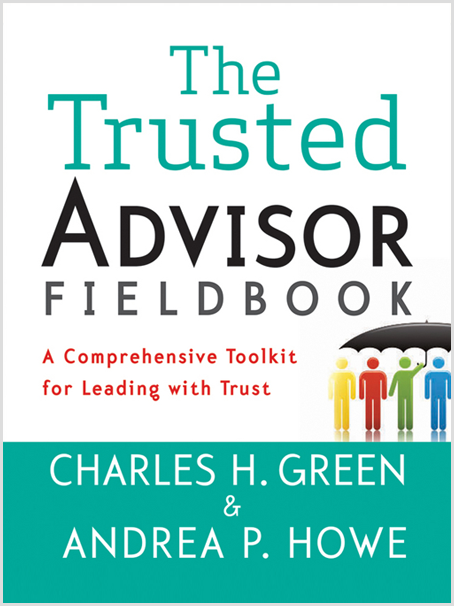This post is part of our Weekly Tips series.

I’ve been having a lot of conversations with clients lately about how to create a culture of trust. Here’s a four-part “test” to see how well you’re doing on that front.
In The Trusted Advisor Fieldbook, Charlie Green and I asserted that there are two basic dimensions of trust-based organizations: virtues and values. Virtues are the personal qualities that high-trust people embody—tools like the trust equation help here. Values are what guide the decisions and day-to-day actions in the organizations people work in. We said that in high-trust cultures, virtues and values are consistent and mutually reinforcing.
The four trust principles that Charlie defined in his book, Trust-Based Selling, are what form the basis of the aforementioned test. Beware, though, as it’s easy to nod your head in agreement with these right-sounding principles. It’s a lot tougher to actually act on them consistently.
See how well your organization scores:
- A focus on the other for the other’s sake, not just as a means to your own ends. In business, the terms client-focus or customer-centric are commonplace. But these terms are all too often tied to economic benefit to the seller or influencer. Ultimately all successful relationships have to be mutually beneficial, which happens fastest when we focus first on others’Bona fide other-focus means we have to be mindful, compassionate, patient, generous, and courageous. Think you’ve got it down? Consider how common it is in your organization to:
- Define a problem statement that overtly (or covertly) blamed the other party for the problem (e.g., “If only they truly understood our value …”);
- Set a goal to double revenue in an account;
- Get tentative about suggesting additional work you could do.It’s tougher than it sounds to live this principle consistently.
- A collaborative approach to relationships. Charlie defines this as a willingness to work together to create both joint goals and joint approaches to getting there. It requires that we think of our interests as intertwined with others’.It sounds obvious and easy. Except there are undoubtedly times when the people in your organization have done things like:
- Waited to present your ideas until they were fully formed and polished;
- Let their secret love to win arguments drive their behavior;
- Practiced sales techniques like “Always Be Closing.”
- A medium- to long-term relationship perspective, not a short-term transactional focus. Focusing on relationships nurtures transactions, whereas focusing on transactions chokes off relationships. The most profitable and rewarding relationships are usually those where every transaction is approached with an assumption of multiple transactions over time.It’s easy to fall into bad behavior traps with this one, too. How often do you:
- Set up projects and relationships in ways that are not sustainable. (Litmus test: Ask yourself if you would do it the way you’ve done it this time another 100 times);
- Make a bad first deal just to get in the door (“We’ll fix it later”);
- Hoard work for yourself when if you were really honest you would admit that a competitor could do a better job.
- A habit of being transparent in all your dealings. Living this principle means that, instead of implicitly treating information on a need-to-know basis, you start with the assumption that all information should be shared. You make exceptions to this rule only if sharing the information would be illegal or injurious.Be on the lookout for contrary behaviors like:
- Saying things to each other that you don’t/won’t say to your clients;
- Avoiding delivering bad news;
- Covering up or downplaying mistakes so as not to make others uneasy.
We all fall short of these trust-building principles to some degree and with some regularity, and our organizations suffer as a result. The questions are: to what extent, and how often. If your aim is to change or reinforce culture, the key is treating them as your true north, always striving to make progress toward them.
Make It Real
This week, gather your team and do a mini assessment. How well do you collectively do at living the four trust principles? What helps and what gets in the way?
Learn More

Read about how to apply the four trust principles to selling, from our friends at Trusted Advisor Associates, or find out how one company engineered a turnaround by focusing on principles in Chapter 29 of The Trusted Advisor Fieldbook.
